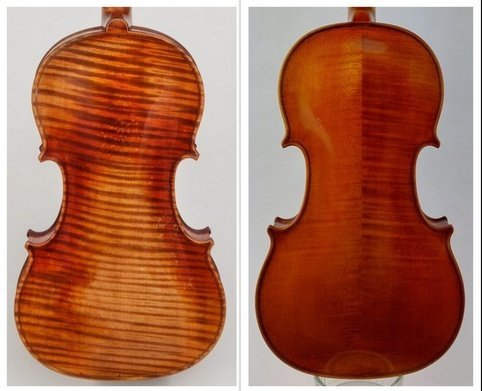How to determine the value of a violin?
Is the Stradivarius I found upstairs in the attic real? You don't have to be an expert to answer this question. The chance that it is a real Stradivarius is extremely small. However, determining the value of an old violin is much more difficult. For this you need specific knowledge and you must have seen many thousands of old instruments. I am far from an expert myself. However, I can mention a number of things that experts pay attention to and look at when they determine the value and origin of a violin. Many of these things are difficult to interpret and are mainly in the head; the more authentic violins that have passed through their hands, the more characteristics the experts can retrieve to identify the instruments. Perhaps this comes as a surprise. The label inside the violin is the last thing an appraiser will look at. It can be the final confirmation of the characteristics that the expert sees in the violin. However, much more often this will not be the case. So many violins have fake labels that a label alone is meaningless. An easy way to tell a simple student violin from a master violin is to look at the scroll. In master violins, the scroll is often fine and well-groomed, sometimes with an individual style. In old, simple study violins, on the other hand, the scroll is coarsely finished; the windings in the curl do not run smoothly and the so-called 'fluting' on the front and back of the scroll are not completely and accurately gouged out (see photos).
coarse and finely chopped scroll
What else to watch out for:
purfling; in the case of cheap violins it is sometimes painted on. The quality is also often clearly visible in the corners; the purfling is tight, the proportions are good and the 'bee-sting' in the corners is sharp and precise. Experts can also say something about the origin of the instrument from the color and thickness of the purfling.
flaming in the wood of the back. Is there a beautiful tiger print in the back? Then it is probably not a simple factory violin.
beautiful flamed maple for violin on the left and not on the right
varnish; a harder (methylated spirits) varnish is often used for simple violins. The drying time is shorter and this is therefore faster for production. For better violins, a (softer) oil lacquer is generally used. Different schools use different paint compositions, apply the paint in different ways and have preferences for distinctive color combinations.
Fingerboard; if it is not made of ebony (but of lighter wood) then it is probably a very simple violin.
neck; if the violin has been given a new neck, this may indicate that it is an old (authentic) violin. From about 1800, violins with a longer neck were built. Old violins from before this time were later 'necked'.
The above violin curl has been necked and the holes have been plastered
As mentioned before, the more violins you see, the easier it becomes to distinguish characteristics and to attribute violins to a certain school or region. Perhaps you will discover some characteristics when you look at the violins on our site!





